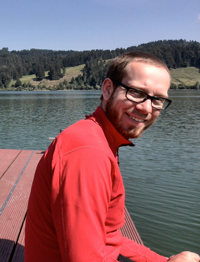 |
Contact:Institute for Atmospheric Physics Johannes Gutenberg University Mainz
Joh.-Joachim-Becherweg 21
55099 Mainz
Germany Fon: +49-(0)6131-39-22283 |
Research associate in the group Airborne Measurements and UTLS Transport Processes, headed by Univ.-Prof. Dr. Peter Hoor.
Research Interests
constituent transport in the troposphere and UTLS; dynamical processes in the UTLS; numerical modelling; big data analysis
Research tools
numerical models (ICON, COSMO, LAGRANTO, FLEXPART); NWP products and reanalysis data; airborne measurements; python
Research in a nutshell
My primary research is about dynamics on the synoptic- and meso-scale and consequences for constituent transport in the atmosphere. In particular I am interested in situations where transport occurs across so-called
transport barriers. One of these transport barriers is the tropopause, i.e., the barrier between the
well-mixed troposphere and the rather stably stratified stratosphere. In mid-latitudes such cross tropopause exchange occurs to a large degree in relation to baroclinic wave dynamics. These rather large scale phenomena on the planetary and synoptic scale are accompanied by meso-scale features such as gravity waves and cloud occurrence at the tropopause which alter the tropopause structure and in some cases foster exchange. I study the underlying processes with a hierarchy of numerical models, from regional, idealized to global, realistic models. More so, I use Lagrangian analysis methods (e.g., trajectory calculations), forecast, analysis, and reanalysis data in conjunction with high resolution air borne measurements to identify and constrain processes leading to exchange between tropospheric and stratospheric air.
Another transport barrier that I am currently interested in is the so-called polar dome. This feature emerges close to the surface in the High Arctic, most dominantly during winter and spring. This barrier separates the High Arctic from the mid-latitudes but is under special circumstances permeable, thus providing the
opportunity for mid-latitude emissions to enter into the High Arctic. These events then have a local impact on air quality but the underlying dynamics are also of relevance for the climate in the Arctic.